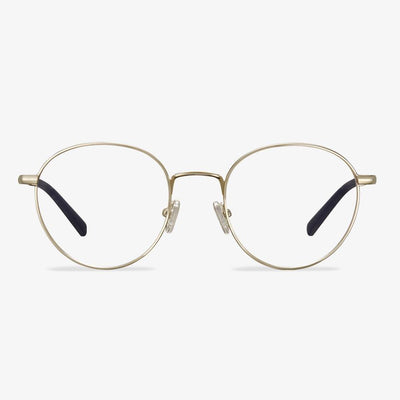Should I wear glasses all the time for myopia?
Whether it is false myopia or true myopia, as long as a pair of suitable myopia glasses are used to complement the missing refractive power of the lens, the image of the object can fall on the retina again, and the distant objects can be seen again. Adolescents usually use high eye intensity and often wear myopia glasses, so that the ciliary muscles do not need to be 'so tired' to adjust, which can avoid further aggravation of pseudomyopia. However, adolescents are still in the process of development, and the degree of true myopia will gradually increase with age. Therefore, as the degree of myopia develops, refraction should be performed at regular intervals, and appropriate glasses for myopia can be prepared to prevent false myopia.
For adults under 200 degrees, because the degree is relatively light, they can wear glasses when they are looking at the distance and not wear glasses when they are near, which has little effect on vision. But for adults with high myopia, because of the weak adjustment ability of the eyes, it is recommended to wear glasses regardless of near vision or distance vision.
In summary, wearing myopia glasses is to reduce eye fatigue and prevents the occurrence of false myopia. Wearing myopia glasses from time to time may aggravate the degree of myopia, and wearing them often does not cause a burden on the eyes. Therefore, for myopia glasses, wearing them frequently is the most correct way to wear them.
The material of spectacle lens
It is not only based on the refractive index to select but also depends on the material of the spectacle lens. Then there are several types of materials for myopia glasses. For example, there are glass, resin, and better PC lenses. There are also obvious differences between the three materials. The use rate of glass lenses is not high now. The myopia lenses that you often see are mainly resin lenses. These resin lenses are more suitable for wearing. Also, you can choose PC lenses. There are many PC lenses on the market. This kind of lens is very light, high toughness, and not easy to break, so it is also very popular with everyone. These three materials have their own advantages and disadvantages, so decide which one to buy according to your needs.
What is night blindness?
Diminished night vision can also be called night blindness. When you suffer from night blindness, it does not mean that you can't see anything at all at night. This means that you have difficulty driving or seeing things in dark or dim lighting conditions. Night blindness also makes it difficult for the eyes to change from bright light to dim light. This is why night driving in oncoming vehicles can be challenging for some people with night blindness.
Many people have experienced a condition called night blindness, which can make driving at night difficult. Driving glasses at night should help alleviate this situation. However, research shows that night driving glasses are generally ineffective.
If you encounter problems while driving at night, please make sure that all reflective surfaces in your car are clean and free of dirt. You should also see an ophthalmologist determine the cause of the problem. Many causes of night blindness can be easily corrected, making you and others safer during the journey.
About Polarized Sunglasses
Polarized sunglasses only absorb the reflected light of the object itself, presenting what is being seen, making the field of view clearer and thus reducing eye strain. In addition, the light through a bumpy road, water, and other places also can produce irregular diffuse light. The polarized lens can be this kind of optical filter, only absorbing the reflection of the object itself. Because of its high-efficiency filter layer, the UV blocking rate of the polarized sunglasses is 99%, which can effectively reduce UV damage to the eyes. And if you are driving, fishing, traveling, skiing, it is recommended to choose more powerful polarized sunglasses.
What Are Bifocals?
There are several kinds of lenses available in the market. Now, there is a kind of lenses by stacking two different kinds of lenses together and they are called a bifocal lens. Bifocal lenses are lenses with lines separating two different prescriptions. There is a presence of a distance lens at the top and the lower part has a lens that can be used to view the objects placed nearby.
Bifocal lenses are designed for people who have presbyopia, a condition in which the person can’t see the nearby placed objects. Presbyopia is an age-related condition, often occurred when people are over 40 and people often have blurred vision.
At the same time, there are different types of bifocal lenses present and they provide the same user which is the lower part of the lens is used to view the nearby objects or to do work related to reading and writing while the upper part of the lens is used to view the objects placed at a faraway distance or to do an activity like driving.
So, in the following section, we will show you the different types of bifocal lenses.
Martinez Eye Associates
Optometrists and the Optometrists Association team are committed to providing the best optometry service. They invite you to visit their website. Martinez Eye Associates is a full-service eye and vision care provider based on personal attention and professional care. They are dedicated to providing the highest quality of eye care from infants to seniors. Online contact lens stores offer very competitive prices. They ship directly from the manufacturer within 3-5 business days. They are committed to providing high-quality optometry services in a comfortable environment.
3 Common Problems with Progressive Lenses
Though progressive lenses are popular to correct some eye conditions, there are also some drawbacks. So, in the following section, we will show you some common problems with progressive lenses.
Dizziness: the three different focal lengths of progressive lenses can make people susceptible to dizziness, as well as vertigo. From long to medium to short distance, the lenses offer a gradient of increasing strength. So, it would have trouble in adapting the glasses for the people who are wearing them for the first time. A common mistake is to look out of the wrong focal length, causing their vision to be blurry and lead to an overall feeling of dizziness.
Peripheral distortion: another common problem of progressive lenses is the way in which they blur peripheral vision. Most glasses cause an initial distortion to vision. However, the three different segments found in these lenses can make that distortion feel more prominent than other pairs of eyeglasses. And most people may need two weeks to adjust to progressive lenses.
Depth perception: Since progressive lenses provide three different prescriptions to see objects clearly for different distances, it is important that you need to move your head instead of your eyes when focusing on objects at different distances. Prior to adjusting to this little nuance, progressive lenses can cause depth perception to feel off.
From the above information, you have known some common problems with progressive lenses. So, you may ask how to adjust the progressive lenses. The most popular way is that you need to wear them frequently.











































